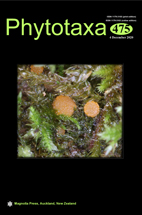Abstract
Monogeneric Aponogetonaceae is sister to the rest of tepaloid core Alismatales and its members are characterized by a number of plesiomorphic features including monosulcate pollen. A recent study documented the earliest fossil pollen records of Aponogeton in late Cretaceous and early Cenozoic as well as recognized six pollen types in the genus. However, there are remaining gaps in palynological investivation of Aponogeton species. We present data on eight Indian species of the genus. Pollen of Aponogeton appendiculatus, A. crispus, A. bruggenii, A. microphyllus, A. natans, A. nateshii and A. wolfgangianus is reticulate with quite small lumina of irregular shape with short, convex and wide muri bearing small (up to 0.5 μm) echini. Pollen of Aponogeton satarensis clearly differs from that of the rest of examined species in larger lumina and muri bearing large (0.8–1 μm) and wide conical echini. These palynological differences fit well with molecular phylogenetic data and earlier ideas based on gross morphology. Our data suggest that although exine sculpturing is taxonomically significant in Aponogeton, the use of size of echini as a character distinguishing some palynotypes is problematic. Quantitative characters such as equatorial diameter and polar axis length showed no clear differences between examined species, but differences were found between analyzed samples (more precise, individuals) of the same species. Our new data support the earlier conclusion on the homoplastic nature of pollen evolution in Aponogeton.

